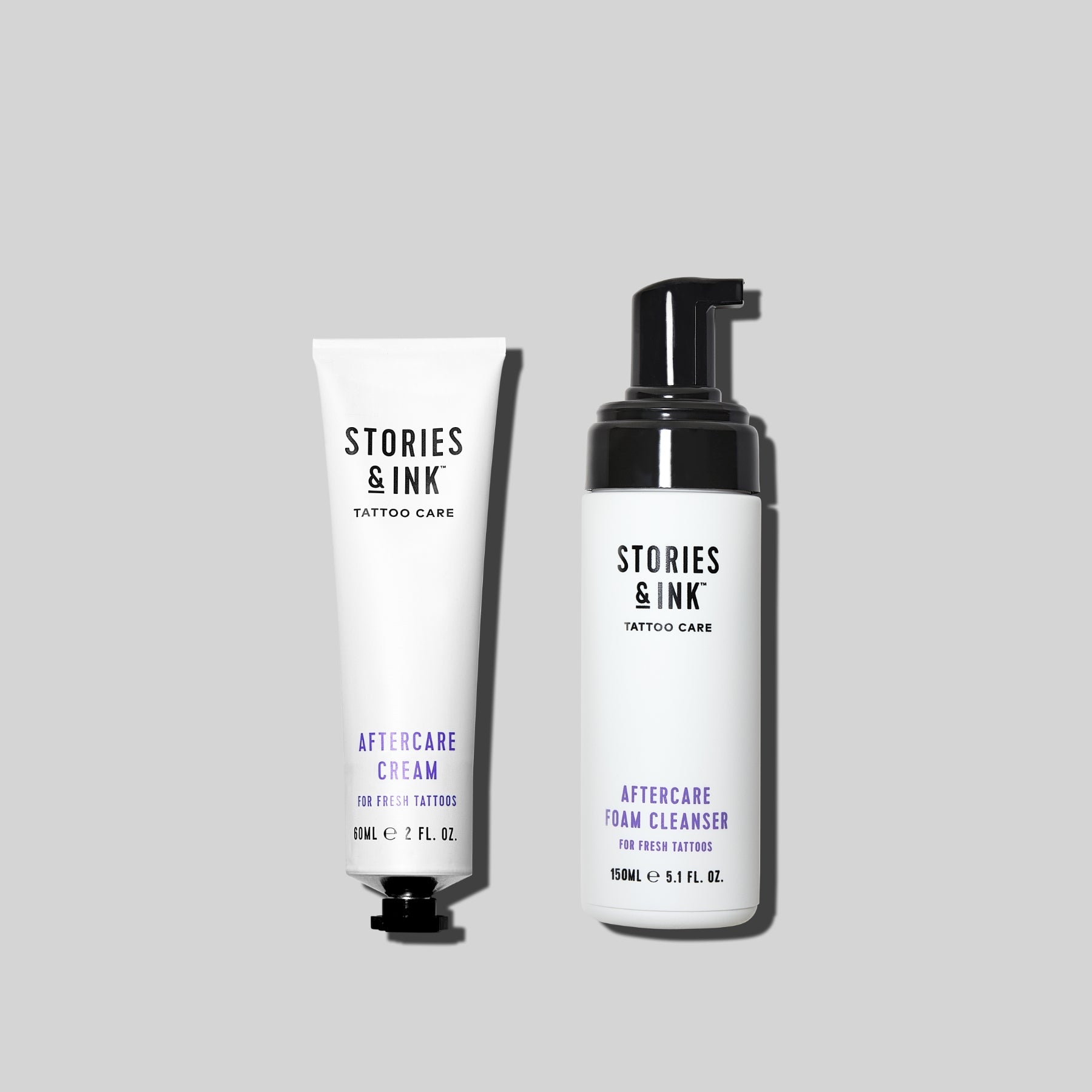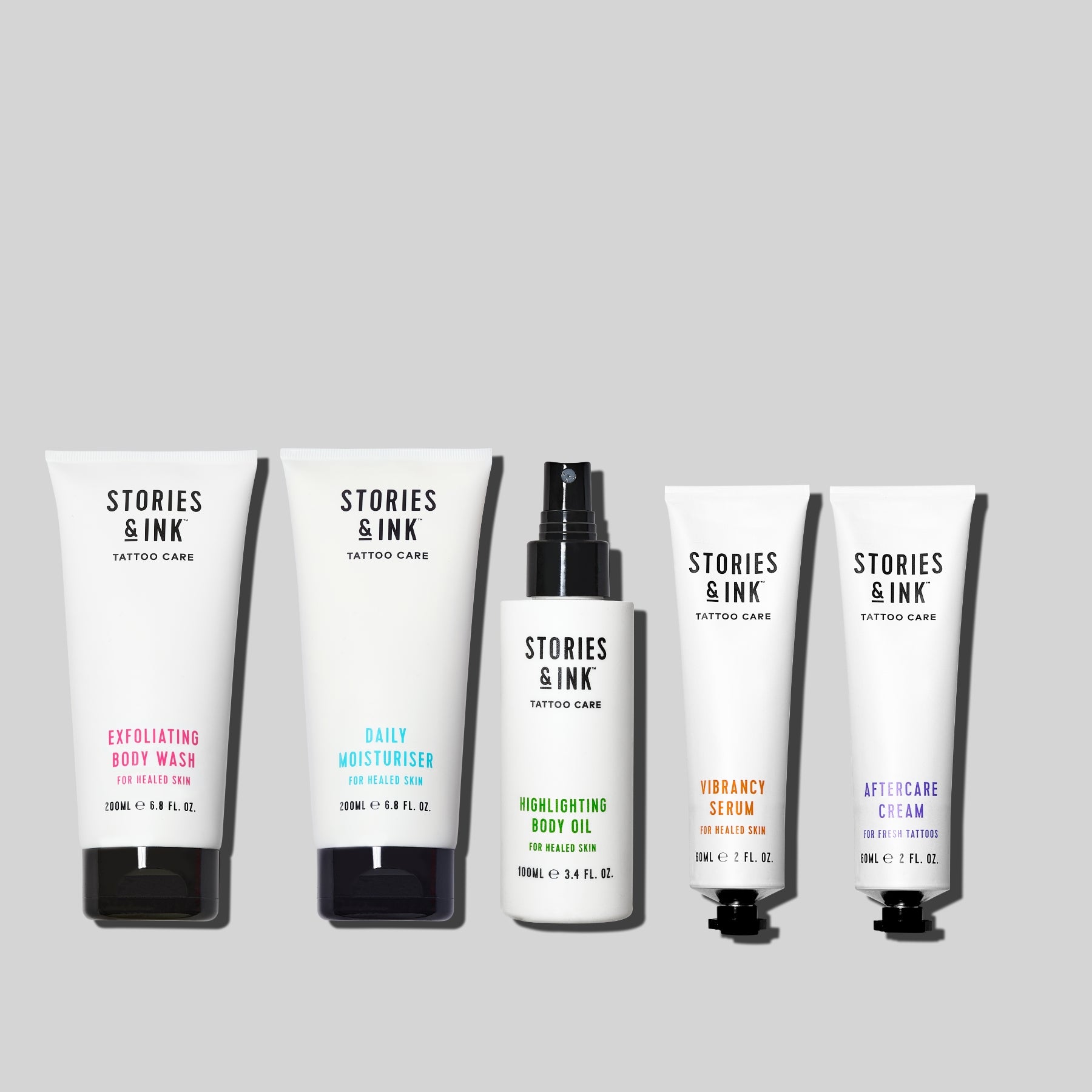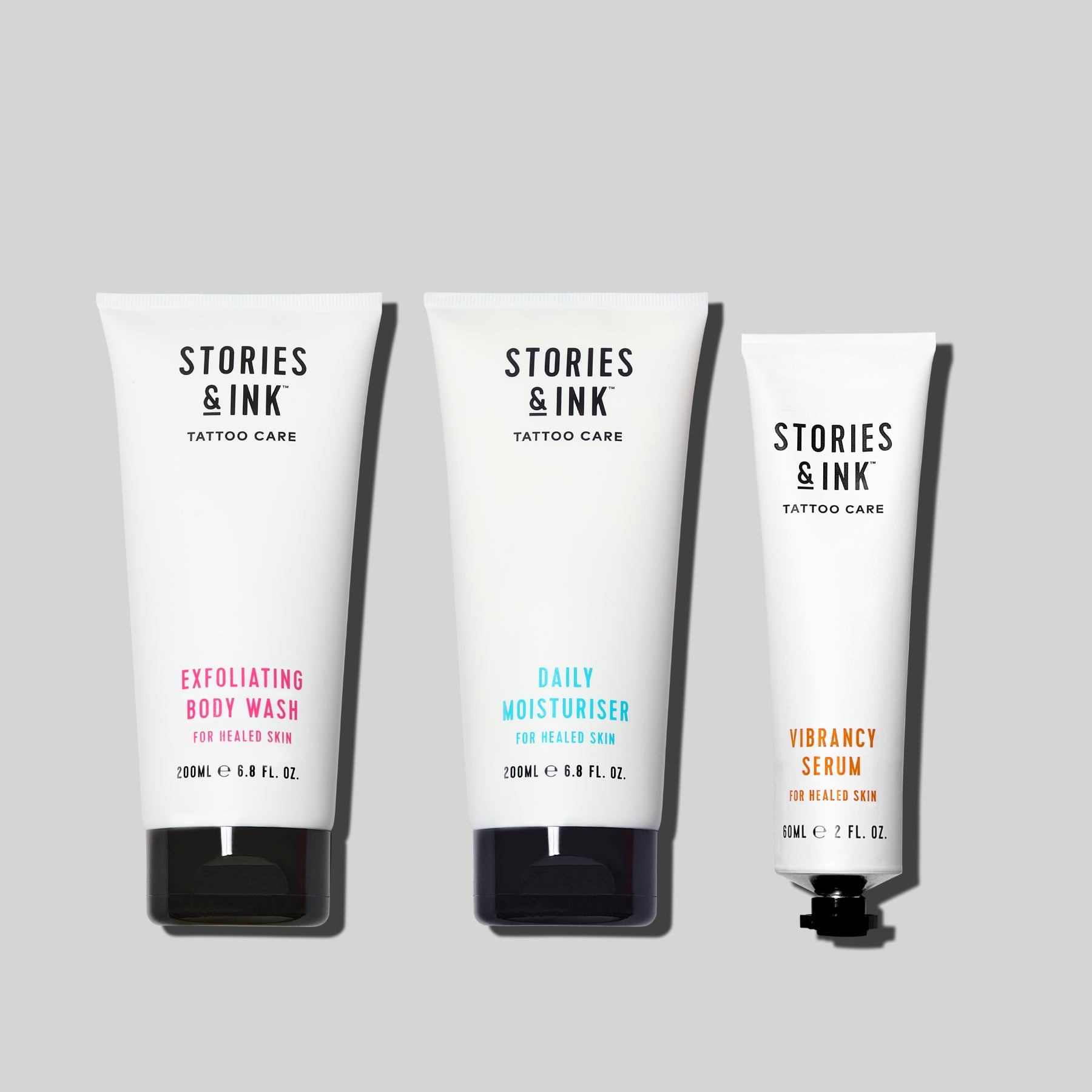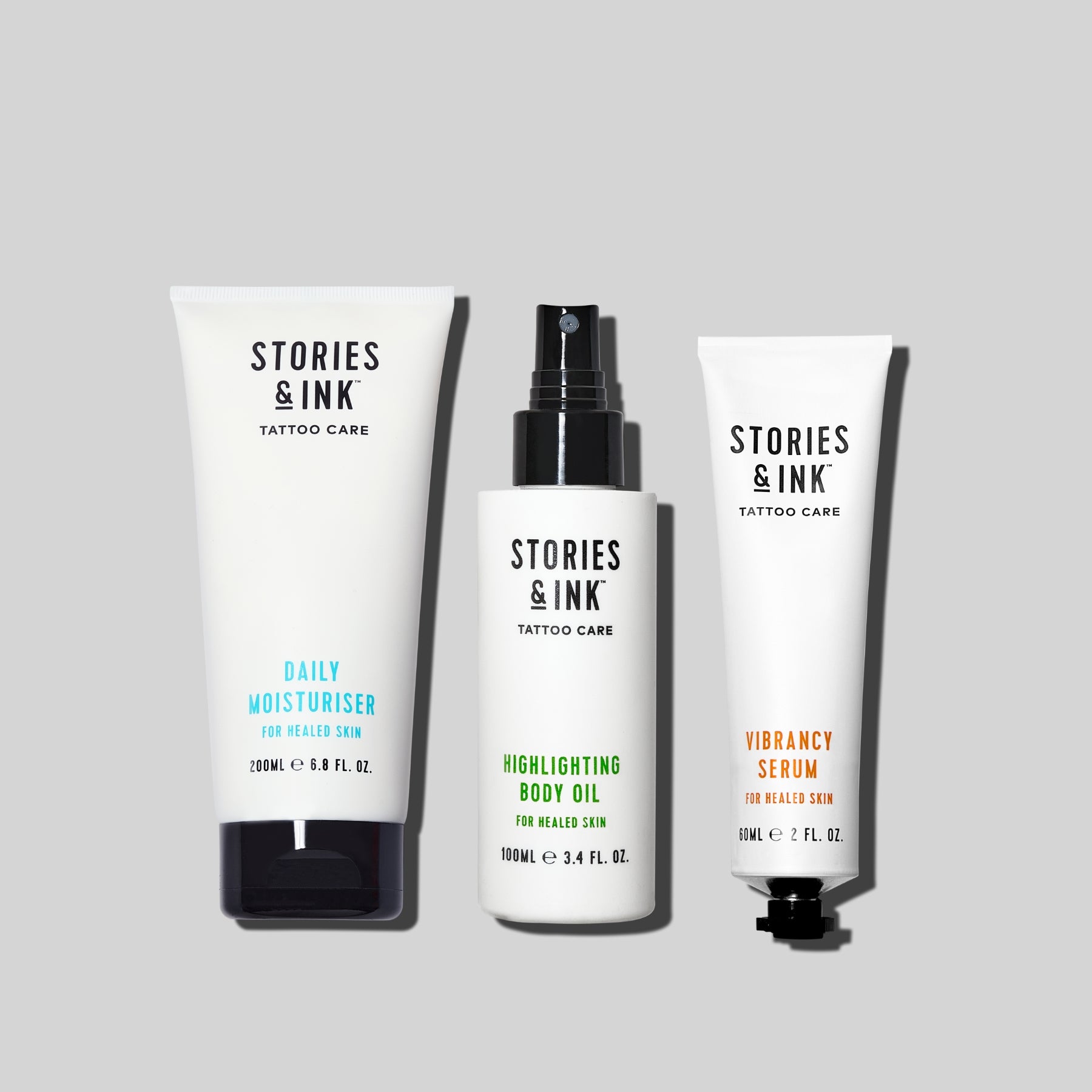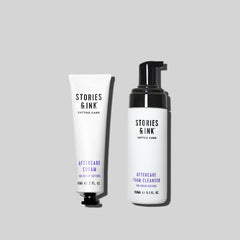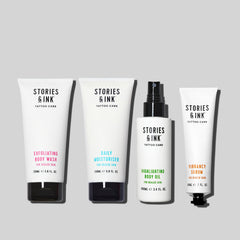
With K-Culture booming, we caught up with Hwizi — the tattoo artist turning heads with a killer mix of creativity and Dancheong-inspired colour.
Hwizi’s work is a true reflection of their journey, blending personal history with a passion for infusing Eastern traditions into bold, beautiful designs.
The London-based artist's eye-popping tattoos, especially those inspired by Dancheong, the vibrant, intricate painting style found on Korean temples and palaces, immediately grabbed our attention. And with the global rise of Korean culture showing no signs of slowing, we caught up to talk about transforming ancient motifs into modern tattoo masterpieces.
What first drew you to tattooing, and how did your interest in colour, Korean, and Eastern-inspired designs begin?
I first got a tattoo after seeing one on a senior I really admired in university. It was out of respect and curiosity—and that moment led me to get my very first tattoo. As someone who studied design, I found it fascinating to wear meaningful artwork on your skin. Naturally, I became more interested in tattooing itself and began learning.
As I developed my own style, I started asking myself what kind of work truly represents me. I’ve always been drawn to bold colors and wanted to incorporate my identity as a Korean person into my designs. That’s how I began working with the motif of Dancheong.

How has your cultural background influenced your work?
I grew up in a very unique home in Seoul with a Buddhist temple right in our garden. That’s quite rare, especially for a big, bustling city like Seoul—kind of like London. From a young age, I would play and meditate with monks at the temple. Buddhism and temple culture became a natural part of my upbringing.
The vivid patterns and colors painted on the temple buildings always left a deep impression on me. I think those early experiences shaped my appreciation for traditional Korean aesthetics and led to the style of tattooing I do now.

Can you walk us through your typical process from concept to completed tattoo?
Many of my clients are either interested in Korea, have lived there, or become drawn to Korean style through my work. When someone requests a tattoo using traditional Korean color schemes or motifs, I begin with an in-depth conversation to understand their story. Then I research and sketch designs that will match both their vision and cultural significance.
When I lived in Korea, I often visited temples and palaces in my spare time, studying the colors and patterns used there. This ongoing research helps me develop not just generic Dancheong, but designs that carry my own interpretation and emotion.
With the global rise of Korean culture - like K-pop, dramas, and beauty trends - have you seen more international clients requesting traditional Korean symbols or styles?
Absolutely! Especially after the release of the Netflix series K-Demon Hunters, I received many requests featuring tigers, magpies, and traditional Korean patterns.
During conversations with clients, I often learn that they’re secretly learning Korean, majoring in Korean studies, or already fluent in the language. It’s been amazing to witness this growing affection for Korean culture firsthand. Even back when I worked in Korea, more than 80% of my clients were from overseas—so this international interest isn’t new to me.

What are some classic Korean tattoo designs or iconic motifs?
One of the most iconic elements I use is Dancheong. It’s a traditional Korean decorative painting style that’s found in temples and palaces. The colors are symbolic:
- Blue symbolizes the east and spring
- Red stands for the south and summer
- White for the west and autumn
- Black for the north and winter
- Yellow represents the center and the earth.
Each color has a philosophical meaning rooted in traditional Korean cosmology, and I find this deeply inspiring. My work tries to bring these elements into a contemporary light while respecting their origins.
How do you balance the deep meaning behind traditional Korean symbols with the aesthetic preferences of Western clients who might not know the full context?
If you look at my portfolio, you’ll see how I adapt Dancheong patterns and Korean color schemes into each client's preferences. Some clients come to me specifically because they appreciate Korean culture. Others might not know the origin of the motifs, but they’re drawn to the vibrant aesthetics.
For those clients, I often incorporate personal elements—like their pets, hobbies, or favorite themes—and merge those with my style. I also explain the cultural background if they’re interested. I honestly feel so grateful when someone connects with my work, even without knowing all the details. That connection alone is meaningful.
"Each color has a philosophical meaning rooted in traditional Korean cosmology, and I find this deeply inspiring"
As K-Culture gains global influence, what do you hope people take away from Korean-style tattoos beyond the visual?
For me, tattooing is much more than just putting an image on the skin. It's about capturing a memory, expressing emotion, and representing someone's identity. The traditional Korean patterns and colors I use often carry deep symbolism, which I believe can offer a powerful emotional resonance.
Take Dancheong, for example. It’s not just decoration—it’s a symbol that has protected spaces and spirits for centuries. These patterns were used in temples and palaces to convey sacredness and stability. So when I place Dancheong on someone’s skin, it feels like a bridge where tradition meets the present—past and future coexisting in one body. I find that incredibly beautiful.

Of course, tattooing today is often seen as fashion, and many people look for bold or stylish designs. But I’ve noticed that more and more clients also want to connect with the story behind the art. Some are deeply drawn to Korean traditions and colors; others are simply captivated by the design without knowing why. But when I explain the meaning behind the patterns—the symbolism of each color or motif—they begin to see the tattoo in a new, more personal light.
"I hope Korean-inspired tattoos can become more than just beautiful designs—they can be symbols of life, memory, and emotional exchange"
That’s why I hope Korean-style tattoos aren’t seen as just “pretty patterns.” I want the cultural depth, the philosophy, and the emotion behind these designs to leave a small but lasting impact on each person’s life. Whether it offers comfort during hard times or helps someone feel more connected to their identity, I hope my work can serve as a quiet, empowering presence.
In the end, I feel like I’m building a deep relationship with every client. Their stories—their pain, love, and longing—are shared with me and transformed into something permanent. It becomes a meaningful moment for both of us, and a way to share and honor each other’s cultures. So I hope Korean-inspired tattoos can become more than just beautiful designs—they can be symbols of life, memory, and emotional exchange.
See more of Hwizi's work @stroke.hwizi_tt
